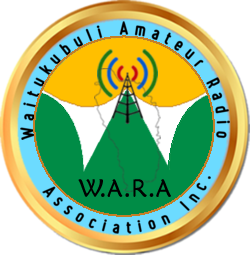Winlink Wednesday
A derivative of Winlink Wednesday by Greg Butler, KW6GB
Winlink Wednesday is a weekly amateur radio digital net organized by the Waitukubuli Amateur Radio Association Inc. on the island of Dominica where check-ins are accomplished by using the Winlink (global email via amateur radio) system.
Anyone with a valid amateur radio license is free to get a Winlink account, and is more than welcome to check in to this net.
Purpose
The primary purpose of Winlink Wednesday is to encourage the regular use of Winlink among amateur radio operators in Dominica and the Eastern Caribbean. Operators from outside of the Eastern Caribbean region are welcome to participate as long as they wish, but are encouraged to start a similar net in their own region to broaden the use of Winlink even further. Regular practice in the use of Winlink is encouraged, in all of its various modes currently available to the end user, as well as any modes that may be developed by the Winlink Development Team or acquired by the amateur in the future. These include, but are not limited to, Packet, Winmor, ARDOP, VARA, and PACTOR. The Facebook group “WARAInc” also provides a forum for assistance in station setup and technique as well as allowing for a free exchange of ideas.
Participation
All check-in messages are to be sent to J73W, the callsign assigned to Waitukubuli Amateur Radio Association. Check-ins may be submitted anytime between 0000 and 2359 Eastern Caribbean time each Wednesday. The use of Winlink Express client software is preferred. Messages may be sent by accessing any RMS station (Winlink gateway) that the participant can reach. These are referred to as “RMS Check-ins.” Checkins can be in two formats:
- Plain message format
- (NEW) Winlink check-in form
- The plain message format for a “Standard Check-in” is as follows:
To: J73W
Subject: Winlink Wednesday Check-In
Message body: call sign, first name, city or town, country, (HF or VHF, etc.)
Message body example: J73WA, Wayne, Portsmouth, Dominica (HF)
The format of the message body is important because it is copied and pasted directly into the net roster, which is posted on our website. (see “Net Results,” below).
Check-ins using the Winlink Check-in form is also accepted. The Winlink Check-in form can be found under General Forms in the Standard Template manager. When using the form, click on the “Setup” button and enter “Waitukubuli Amateur Radio Association Winlink Wednesday”, then proceed to fill the form providing the appropriate information. Please note that check-ins, where the mode is not specified, will be categorized as “TELNET”.
On the first Wednesday of each month, check-ins that include a brief weather snapshot on the second line of the message are requested, though not required.
Weather snapshot message body example:
J73YOU, Ron, Marigot, Dominica, (HF)
0841L, Clear, Sunny, Calm Winds, 79°F
On the second Wednesday of each month, check-ins that use an attached Winlink-native IARU radiogram form are requested, though not required.
On the third Wednesday of each month, check-ins that use an attached, Winlink-native ICS-213 form are requested, though not required.
Multiple Check-ins
In an effort to promote the use of both the HF and VHF networks, check-ins on both networks will be treated as separate check-ins. This means that an operator can check-in via HF then check in a second time using the VHF network in his/her area. Check-ins via telnet will only count if the operator does not check-in via one of the radio modes. If the operator checks in via both telnet and a radio mode, only the radio mode check-in will count. It is vitally important that the manner of check-in is clearly indicated in the check-in document. If not, the check-in will be counted as telnet.
Peer-to-Peer Sessions
Peer-to-Peer (P2P) sessions on HF are conducted during the net each week. These sessions allow practice for an “Internet down” scenario. The general schedule for the P2P sessions is as follows:
HF Winmor P2P session: 0730-1800L, 7104 kHz (dial), 7105.5 (Center) Upper Sideband.
VHF Packet session: 18:30-2130L, 145.01 MHz (dial) via J73AUX digipeater.
Occasionally, this schedule gets altered due to travel or other obligations. Any changes are noted in the weekly reminder distributed via Winlink to participants and on the “WARAInc” Facebook page each Tuesday. Once the P2P session is active, it is announced within the Facebook reminder thread. The message format for these “P2P Check-ins” is the same as for RMS check-ins. Any changes will be noted in the weekly reminders.
PEER TO PEER SESSIONS ARE CURRENTLY UNAVAILABLE
Net Results
Each Thursday, a brief message is distributed via Winlink to the current week’s participants, acknowledging their check-ins. The check-ins below will also be updated.
Net Check Ins
Graph depicting the net’s weekly check-ins
This Week's Check-In Map
Map depicting the stations that checked in to the last Winlink Wednesday net.





